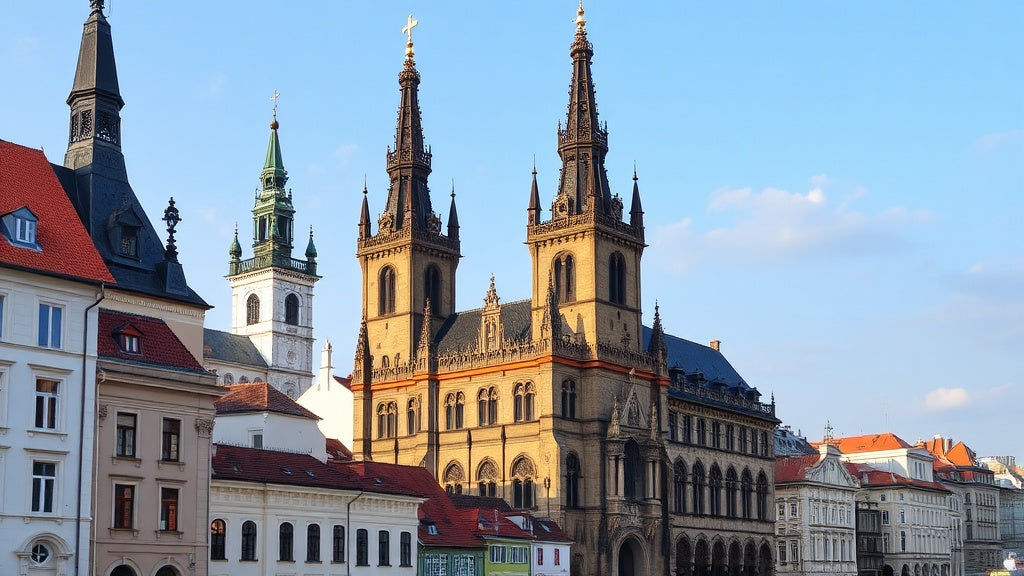
"Romania's WWII Journey: From Expansion to Strife, Strategic Alliances, and a Tumultuous Legacy"
, by Unboxify, 11 min reading time

, by Unboxify, 11 min reading time
After the First World War, Romania found itself in an unexpected position. Despite suffering military defeats at the hands of the Central Powers, it emerged with extensive new territories. The reconfiguration of the map was not attributed to Romania's victories but to the downfall of its adversaries—the Austro-Hungarian and Russian Empires. This geopolitical shift was monumental; it realized the long-cherished dream of a greater Romania, effectively doubling its territory. However, the expansion came at a cost, stirring ethnic divisions and brewing geopolitical tensions.
The newly acquired regions were a melting pot of ethnicities—Hungarian, Bulgarian, Ukrainian, Jewish, Romani, and German minorities comprised about 30% of the population in some areas. In certain districts, Romanians themselves were a minority. This sudden demographic shift posed intricate diplomatic challenges. Romania's neighboring countries, like Hungary, Bulgaria, and the Soviet Union, eyed the newly drawn borders with discontent. Hungary yearned for the return of Transylvania, Bulgaria sought to regain Southern Dobruja, and the Soviet Union focused on Bessarabia.
Given the precarious situation, Romania prioritized securing its borders. The Romanian government believed that aligning with established international bodies and forming strategic alliances would be the safest bet. Romania joined the League of Nations and aligned with France's Eastern European security system to counter Hungarian threats. Moreover, Romania allied with Yugoslavia and Czechoslovakia to form the Little Entente in 1920 and signed a mutual defense treaty with Poland in 1921 to safeguard against the Soviet Union.
The 1930s ushered in an era of resurgent German and Soviet power. Germany backed Hungarian claims on Transylvania while the Soviet Union, desiring Bessarabia, was deemed an unreliable ally due to Romania's strong anti-communist sentiment. The rise of these powers forced smaller nations like Romania to navigate a complex web of alliances and enmities.
France, a key ally of Romania, appeared increasingly powerless against German aggression, beginning with Hitler's remilitarization of the Rhineland in 1936. Similarly, the League of Nations seemed ineffective in curbing these expansions. As a result, Romania cautiously tilted toward Germany while maintaining a balanced foreign policy. Hitler, needing Romanian oil for Germany's impending war efforts, redirected Hungary's focus to Czechoslovakia, thereby temporarily reducing tensions with Romania. Despite strengthening ties with Germany, Romania preserved good relations with France and forged new connections with Great Britain to counterbalance France's waning influence.
The political scene within Romania was as tumultuous as its foreign relations, dominated by two pivotal forces: King Carol II and the radical Iron Guard. King Carol ascended to the throne in 1930 under unusual circumstances, aiming to consolidate power and steer Romania toward a royal dictatorship. His rule deepened internal conflicts, especially concerning ethnic minorities.
Contrasting with Carol's relatively moderate stance on ethnic diversity, the Iron Guard—a fascist organization emerging from a group of nationalist university students—advocated for an ethnically pure Romania. They vehemently opposed the political system for being too accommodating toward Jews and Hungarians. Accusing Jews of undue influence and ties to the Soviet Union, the Iron Guard proposed a brutal solution to the minority problem: purifying the nation by eliminating those they viewed as undesirable.
The tension between King Carol's authoritarian ambitions and the Iron Guard's radical nationalism led to a volatile political climate. The Iron Guard saw an increasingly powerful rival in Carol II and directly challenged his authority, resulting in a power struggle that showcased Romania's internal divisions at a time when Europe was descending into war.
Before German armies stormed into Poland in September 1939, Romania strived for neutrality. Following the Munich Agreement in 1938, it secured a commitment to its independence from both Great Britain and France, similar to Poland's guarantee. However, Romania's position during the early stages of the war was a delicate balancing act.
While leaning toward the West, Romania welcomed Polish refugees yet inked beneficial trade agreements with Germany, much to the Allies' dismay. Internally, King Carol opposed the Iron Guard despite employing similar paramilitary and anti-Semitic tactics. His abolishment of the 1923 Constitution bolstered his grip on power, but tensions escalated when he ordered the execution of Iron Guard leader Corneliu Codreanu in 1938, prompting the group to assassinate Prime Minister Armand Călinescu in 1939. Carol retaliated by executing hundreds of Iron Guard members.
In the summer of 1940, geopolitical shifts complicated Carol's efforts to suppress the fascist movement. With France succumbing to German invasion, Carol turned to Germany for support, softening his stance against the Iron Guard and implementing anti-Semitic laws. Oblivious to the Molotov-Ribbentrop Pact, Romania was confronted with Soviet demands for Bessarabia and Northern Bukovina. Under German pressure, Romania ceded these territories, leading to the capture of over 40,000 Romanian troops stationed there. Hungary and Bulgaria then pressed their own territorial claims, further destabilizing the region.
The territorial cessions in 1940 sparked a political crisis that undermined King Carol's authority. In an attempt to stabilize his reign, Carol appointed General Ion Antonescu as Prime Minister. However, this move backfired as Antonescu ousted the king in a coup, forming a new government with the Iron Guard in September 1940.
The fragile coalition between General Antonescu and the Iron Guard crumbled quickly. Their government focused on excluding Jews from Romanian society but clashed in their approaches. Antonescu favored systematic exploitation of Jewish properties, whereas the Iron Guard, weakened by previous purges, resorted to anarchic violence against Jews and other minorities. This culminated in a horrific pogrom in January 1941, where the Iron Guard's rebellion in Bucharest led to unspeakable acts of violence against Romanian Jews. Concerned more about lawlessness and his authority, Antonescu quashed the uprising and expelled the Iron Guard from power.
Antonescu's purge of the Iron Guard did not make Jews any safer. Instead, his regime perpetrated widespread massacres and deportations in Bessarabia, Bukovina, and Transnistria, resulting in the deaths of hundreds of thousands of Jews. This Romanian-led genocide, separate from the Nazi's Final Solution, was characterized by its brutality and efficiency, reflecting deep-seated anti-Semitism and Romania's autonomy in persecuting Jews, far from Nazi coercion.
Aligning closely with Nazi Germany, Antonescu permitted German troop movements through Romania for campaigns against Yugoslavia and Greece. Esteemed by Hitler, Antonescu's regime gained stability and stronger ties with Germany. His ultimate aim was to recover Romania's lost territories, especially Northern Transylvania.
By supporting Germany's war effort against the Soviet Union, Antonescu hoped to leverage his loyalty to persuade Germany to compel Hungary into returning Northern Transylvania. On June 22, 1941, Romania committed more troops to Operation Barbarossa than all of Germany's other allies combined, with nearly 900,000 men. The campaign's early success included reclaiming Bessarabia and Northern Bukovina from Soviet control, sparking public jubilation in Romania.
Romanian soldiers, aspirant to restore pre-war borders and indoctrinated to believe they were fighting Judeo-Bolshevism, initially displayed enthusiasm. However, after recapturing Bessarabia, Romania, urged by Germany, pressed further into the Soviet Union. General Antonescu, driven by the ambition to reclaim more territories, approved sending Romanian forces into the arduous Siege of Odessa from August to October 1941. Faced with robust Soviet defense, the Romanian Army, relying on traditional infantry tactics, encountered high casualties and strategic challenges. German air support became crucial in countering Soviet advances, highlighting Romania's dependence on its Axis allies.
The fall of Odessa led to heinous actions against Jews by Romanian troops. Declared the capital of the new Transnistria Governorate, the city experienced severe oppression under its Romanian occupiers. The primarily Ukrainian region suffered from food extraction and forced labor, serving as a dumping ground for deported Romanian Jews, with up to 120,000 dying in the harsh winter of 1941-42.
By 1942, the pace of advance slowed, yet Antonescu committed more troops, notably in Crimea and the Caucasus, aiming for Stalingrad. The Battle of Stalingrad in winter 1942 marked a dire situation for Romanian troops, who were under-equipped and thinly manned. Battling fierce Soviet offensives, the Romanian lines faced relentless artillery barrages and extreme cold. Despite initial resistance, they ultimately faced retreat or encirclement.
The General Lascar Group, encircled and refusing to surrender, was decimated, with only a single battalion managing a desperate escape. The Fourth Romanian Army, trapped in Kalach-na-Donu, witnessed the fall of six infantry divisions and a cavalry division. The aftermath of Stalingrad was devastating for Romania, with 181,000 casualties representing 16 of the 18 engaged divisions, amounting to half of its active military forces. Additionally, the Romanian Air Corps lost 73 aircraft, with a subsequent Soviet counteroffensive further devastating Romania's military capabilities.
Post-Stalingrad, the alliance between Germany and Romania began to deteriorate. Germany unfairly blamed Romania for the setback, fueling skepticism in Romania about the war's outcome. Although the Romanian Army, greatly weakened by the Stalingrad disaster, received modern German equipment, it was insufficient to compensate for the substantial losses in manpower and material.
In 1943, while much of the Romanian Army retreated home, some units remained, notably around 66,000 soldiers in Crimea for anti-partisan operations. Their evacuation, delayed by Hitler's refusal, began only in April 1944 amidst a Soviet offensive, resulting in further Romanian casualties. By spring 1944, the conflict had reached Romanian soil, with a Soviet offensive in March pushing German and Romanian forces from Ukrainian territories and parts of Bukovina and Bessarabia.
As Romania faced mounting losses in 1944, the inevitability of defeat became apparent. However, Antonescu resisted surrender. Opposition leaders, along with King Michael I—a figurehead until then—launched a coup d'état on August 23, ousting Antonescu and signaling a dramatic shift in Romania's wartime position. King Michael declared democratic restoration and formed a new government, demanding German withdrawal. When refused, Romanian forces expelled German troops, marking a swift reversal unanticipated by Germany.
After aligning with the Allies, Romania contributed over half a million troops to the fight against their former Axis allies, successfully reclaiming Northern Transylvania by October 1944, despite heavy casualties. Concurrently, the USSR established a communist regime, culminating in a dominant communist victory by late 1946.
The final peace treaty signed on February 10, 1947, ceded Bessarabia and Northern Bukovina to the USSR and Southern Dobruja to Bulgaria while restoring Northern Transylvania to Romania. These territorial adjustments marked significant shifts in Romania's political and social landscape, further complicated by the transition to communist rule under Soviet influence.
Navigating shifting alliances, Romania's wartime decisions were marked by anti-Semitism and Nazi collaboration, but they also reflected a genuinely difficult geopolitical position. The costly shift to the Allies, culminating in postwar territorial losses and a transition to communist rule, reshaped Romania's political and social landscape for decades to come. The series of complex and often brutal events during World War II left indelible marks on the nation, forever altering its historical trajectory.
Enjoy rewriting history in the free online PVP strategy game, Call of War. By signing up within the next 30 days, you will receive 13,000 gold and a 1-month premium subscription for free.






